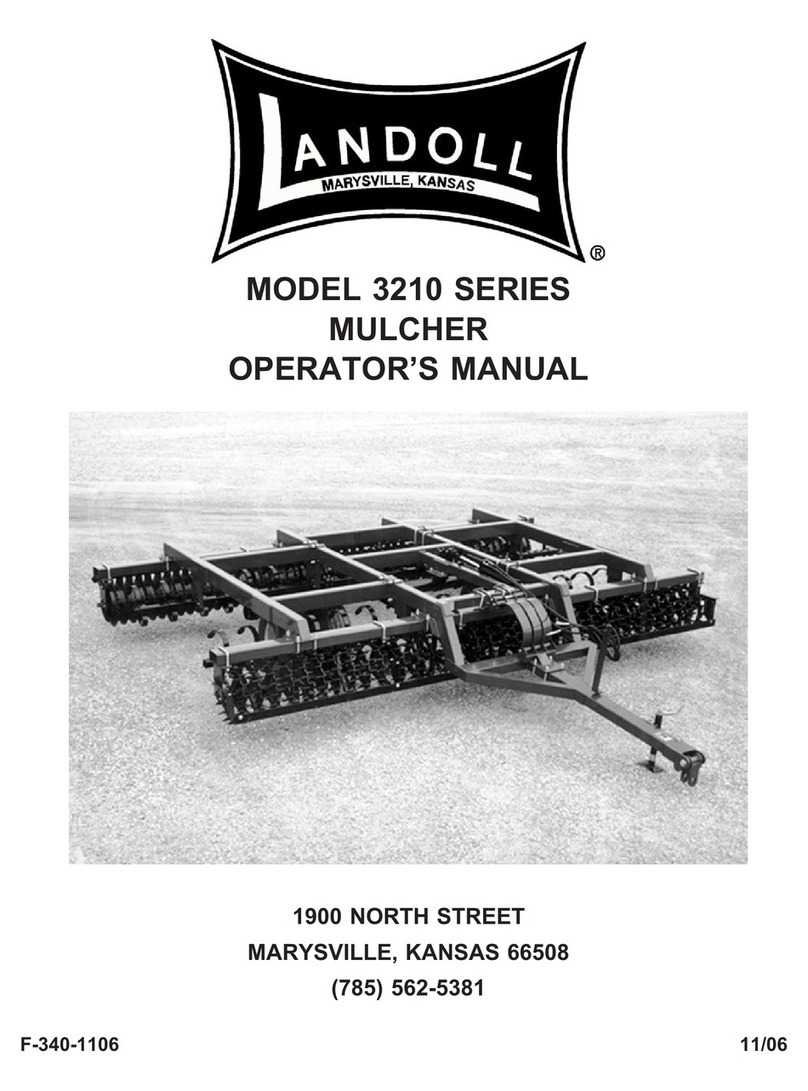
1-2 2K795
INTRODUCTION AND SAFETY INFORMATION
Safety
Investigation has shown that nearly 1/3 of all farm
accidents are caused by careless use of machinery.
Insist that all people working with you or for you abide by
all safety instructions.
Understanding Safety Statements
You will find various types of safety information on the
following pages and on the implement decals (signs)
attached to the implement. This section explains their
meaning.
You should read and understand the information
contained in this manual and on the implement decals
before you attempt to operate or maintain this equipment.
Examine safety decals and be sure you have the correct
safety decals for the implement. See Figure 1-3.
Order replacement decals through your Brillion dealer.
Keep these signs clean so they can be observed readily.
It is important to keep these decals cleaned more
frequently than the implement. Wash with soap and water
or a cleaning solution as required.
Replace decals that become damaged or lost. Also, be
sure that any new implement components installed
during repair include decals which are assigned to them
by the manufacturer.
When applying decals to the implement, be sure to clean
the surface to remove any dirt or residue. Where
possible, sign placement should protect the sign from
abrasion, damage, or obstruction from mud, dirt, oil etc.
Transporting Safety
It is the responsibility of the owner/operator to
comply with all state and local laws.
When transporting the implement on a road or highway,
use adequate warning symbols, reflectors, lights and
slow moving vehicle sign as required. Slow moving
tractors and towed implements can create a hazard when
driven on public roads. They are difficult to see,
especially at night.
Do not tow an implement that, when fully loaded, weighs
more than 1.5 times the weight of the towing vehicle.
Carry reflectors or flags to mark the tractor and
implement in case of breakdown on the road.
Do not transport at speeds over 20 MPH under good
conditions. Never travel at a speed which does not allow
adequate control of steering and stopping. Reduce
speed if towed load is not equipped with brakes.
Avoid sudden stops or turns because the weight of the
implement may cause the operator to lose control of the
tractor. Use a tractor heavier than the implement.
Use caution when towing behind articulated steering
tractors; fast or sharp turns may cause the implement to
shift sideways.
Keep clear of overhead power lines and other
obstructions when transporting. Know the transport
height and width of your implement.
Attaching, Detaching and Storage
• Do not stand between the tractor and implement when
attaching or detaching implement unless both are
blocked from moving.
• Block implement so it will not roll when unhitched from
the tractor.
Special notice - read and thoroughly understand.
Proceed with caution. Failure to heed caution
may cause injury to person or damage product.
Proceed with caution. Failure to heed warning will
cause injury to person or damage product.
Proceed with extreme caution. Failure to heed
notice will cause injury or death to person and/or
damage product.
• Do not allow anyone to ride on the tractor or
implement. Riders could be struck by foreign
objects or thrown from the implement.
• Never allow children to operate equipment.
• Keep bystanders away from implement during
operation.






























